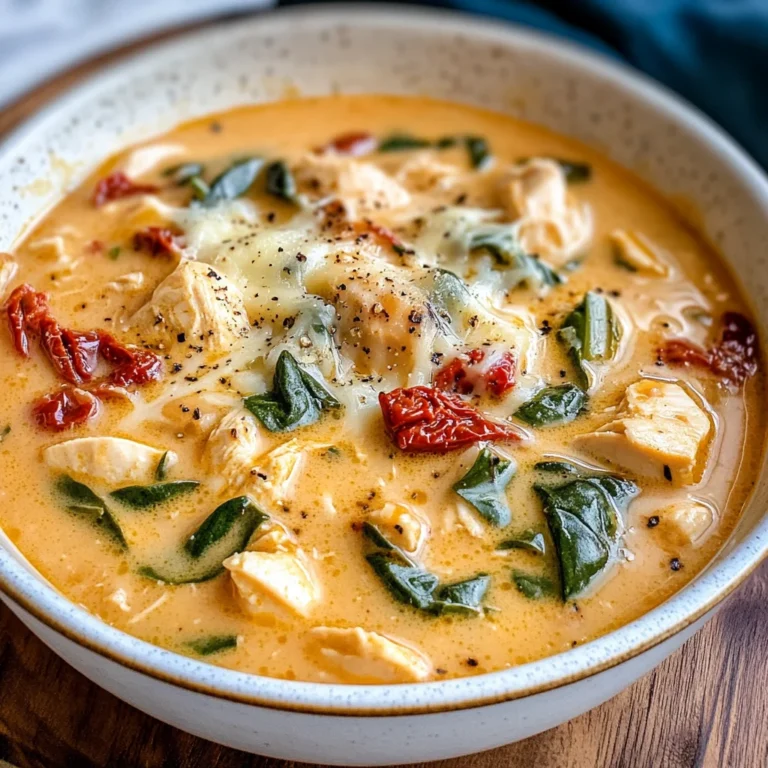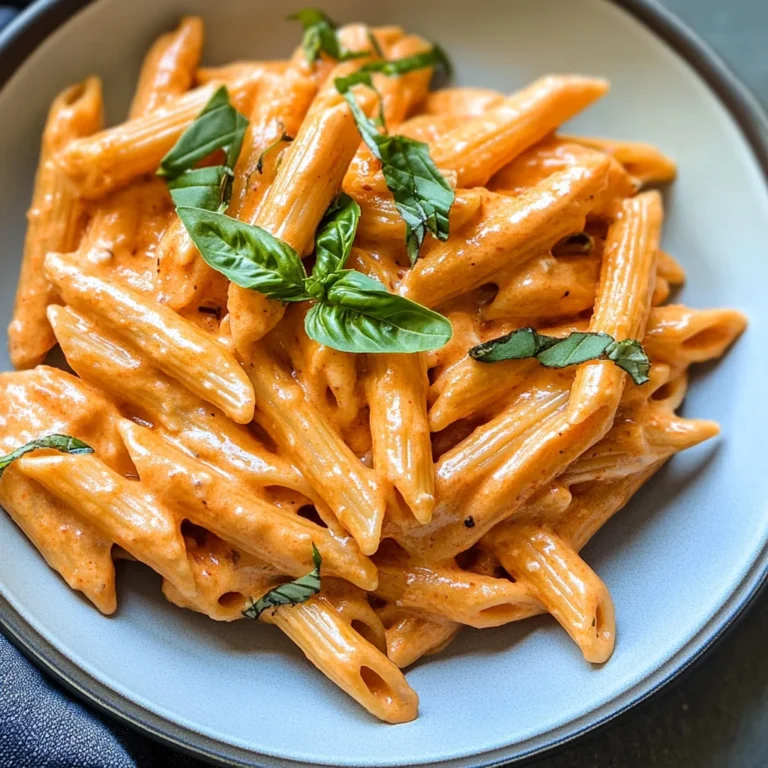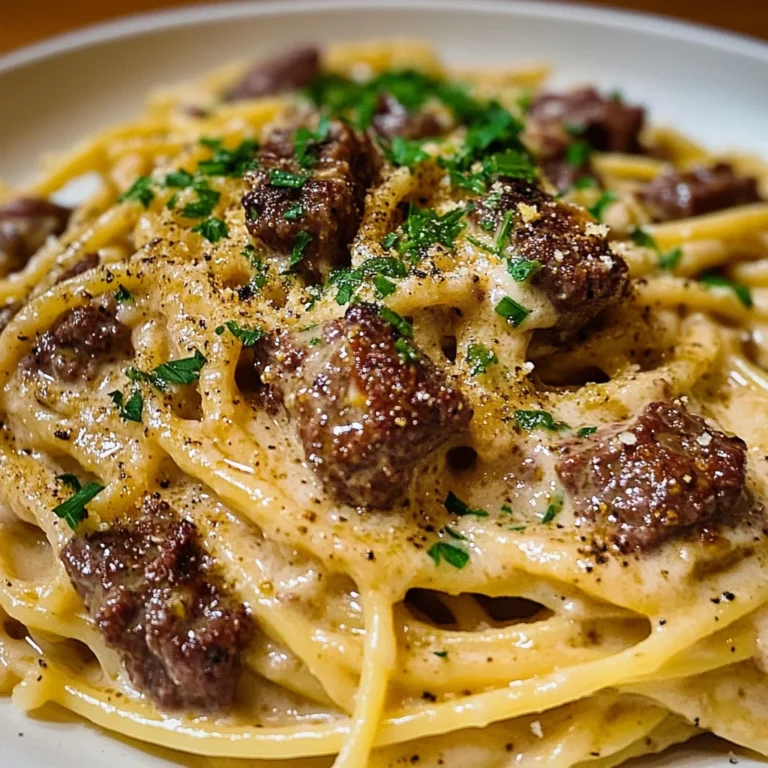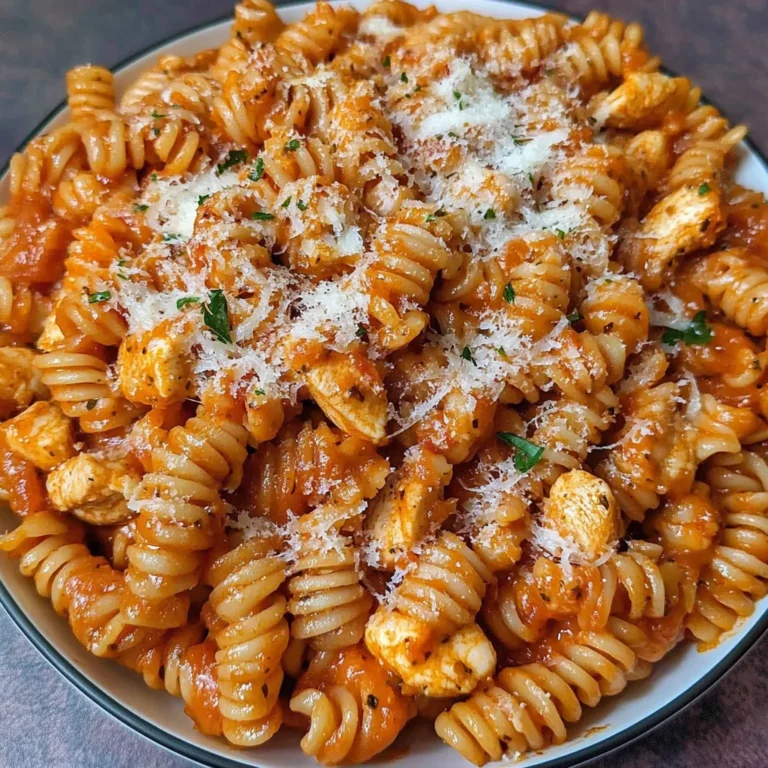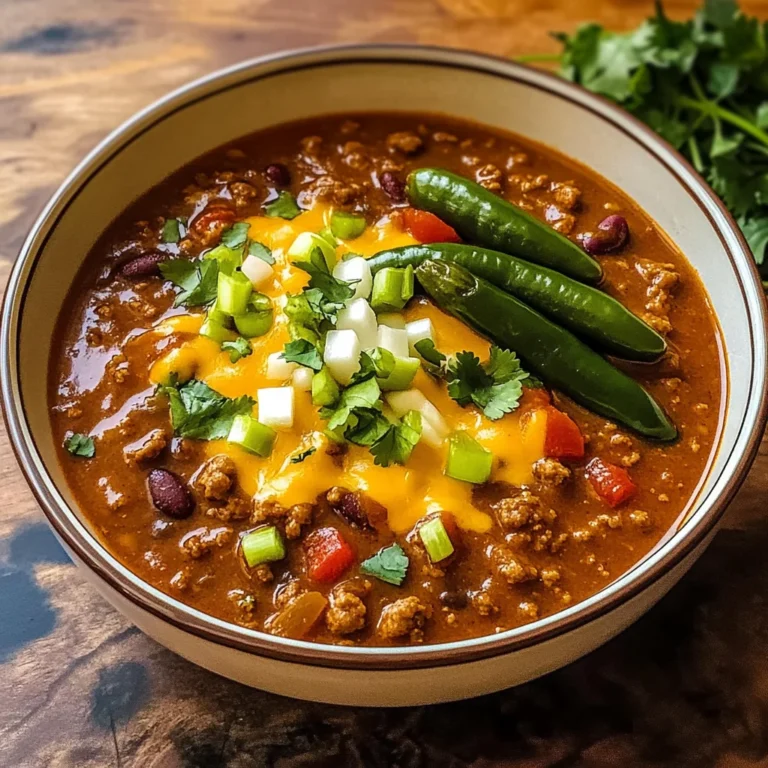Butternut Squash Pasta Sauce
A creamy butternut squash pasta sauce is the perfect addition to your dinner table, bringing together rich flavors and a velvety texture. This versatile sauce is not only easy to make but also offers a healthy way to enjoy pasta. It’s ideal for weeknight meals or special occasions when you want something that impresses without the hassle. The standout feature of this sauce is its simplicity—using wholesome ingredients, it caters to both vegan diets and lovers of comfort food.
Why You’ll Love This Recipe
- Quick and Easy: This recipe comes together in under an hour, making it perfect for busy evenings.
- Rich in Flavor: Roasting the vegetables enhances their natural sweetness, resulting in a deliciously creamy sauce.
- Versatile Dish: Pair it with your favorite pasta shapes or use it as a base for vegetable dishes.
- Healthy Ingredients: Packed with nutrients from butternut squash and tomatoes, it’s guilt-free indulgence.
- Vegan-Friendly: A creamy texture without dairy, making it suitable for various dietary preferences.
Tools and Preparation
Before diving into making this delightful sauce, gather your tools and prepare your workspace. Having everything ready will make the cooking process smooth and enjoyable.
Essential Tools and Equipment
- Baking sheet
- Blender
- Pot for boiling pasta
- Parchment paper
Importance of Each Tool
- Baking Sheet: Essential for roasting the vegetables evenly, ensuring they caramelize beautifully.
- Blender: Helps achieve a silky-smooth sauce that coats the pasta perfectly.
- Pot for Boiling Pasta: A sturdy pot ensures you can cook enough pasta for everyone while keeping it al dente.
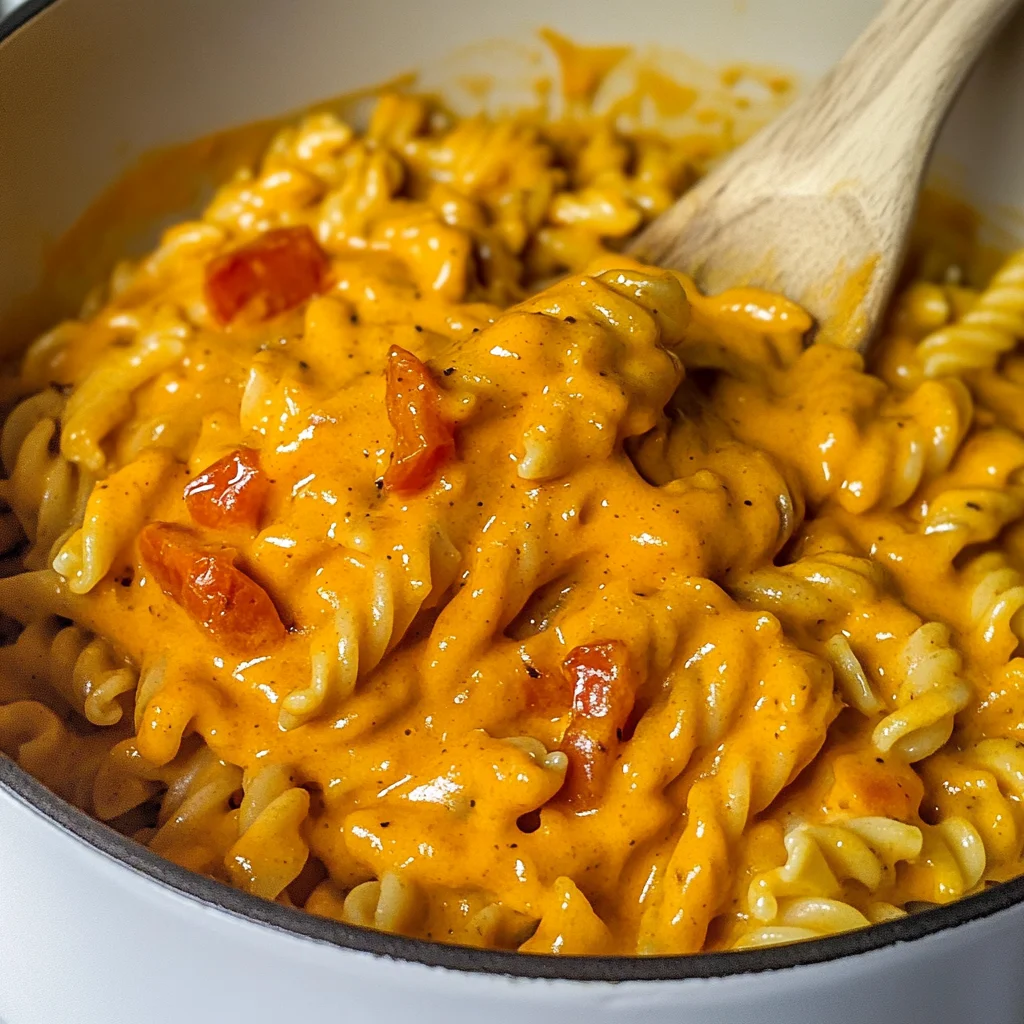
Ingredients
A creamy vegan butternut squash pasta sauce made with simple healthy ingredients.
For the Sauce:
- 16 oz bag of frozen diced butternut squash
- 1.5 cups fresh chopped tomatoes
- 1/2 yellow onion
- 2 tbsp olive oil
- 1 tsp salt
- 1/4 tsp black pepper
- 1/2 tsp dried thyme
For the Pasta:
- 1 lb pasta
- 1/3 cup pasta water reserved from cooked pasta
How to Make Butternut Squash Pasta Sauce
Step 1: Preheat the Oven
Preheat your oven to 450°F (232°C). Line a baking sheet with parchment paper to prevent sticking.
Step 2: Prepare Vegetables
Place the frozen butternut squash cubes, chopped tomatoes, and sliced onion on the baking sheet. Drizzle olive oil over the top and season with salt, black pepper, and dried thyme.
Step 3: Mix and Roast
Mix the vegetables until they are evenly coated with oil and seasonings. Bake at 450°F (232°C) for about 20 minutes or until tender and slightly caramelized.
Step 4: Cook Pasta
While the veggies roast, bring water to a boil in a pot. Cook your chosen pasta according to package instructions until al dente.
Step 5: Reserve Pasta Water
Before draining the cooked pasta, reserve about 1/3 cup of the starchy pasta water. Set this aside as it will help create a creamy sauce.
Step 6: Blend Sauce Ingredients
Remove the roasted vegetables from the oven. In a blender, combine them with the reserved pasta water. Blend until you achieve a smooth sauce consistency.
Step 7: Combine Pasta and Sauce
Pour the blended sauce over the drained pasta in a large bowl. Toss gently until all noodles are evenly coated.
Step 8: Serve
Serve immediately! You can add parmesan cheese or plant-based parmesan on top if desired for extra flavor. Enjoy your delicious butternut squash pasta sauce!
How to Serve Butternut Squash Pasta Sauce
Serving butternut squash pasta sauce can elevate your meal and impress your guests. Here are some delicious ways to enjoy this creamy vegan delight.
Pair with Fresh Greens
- Arugula Salad: Toss arugula with a light vinaigrette for a peppery contrast.
- Spinach and Kale Mix: Combine sautéed spinach and kale for a nutritious side.
Add Crunchy Toppings
- Toasted Pine Nuts: Sprinkle toasted pine nuts for added texture and flavor.
- Chili Flakes: For those who enjoy heat, chili flakes can enhance the dish’s flavor profile.
Serve with Bread
- Garlic Bread: Crispy garlic bread pairs wonderfully with the creamy sauce.
- Focaccia: Soft focaccia bread can be perfect for dipping into extra sauce.
How to Perfect Butternut Squash Pasta Sauce
Perfecting butternut squash pasta sauce is easier than you think. Follow these tips to elevate your dish to the next level.
- Use Fresh Ingredients: Fresh tomatoes and onions make a significant difference in flavor compared to canned options.
- Don’t Overcook the Vegetables: Roasting just until tender ensures maximum flavor without losing texture.
- Adjust Seasonings: Taste and adjust salt, pepper, or herbs to suit your palate before blending.
- Blend Smoothly: Ensure you blend the vegetables thoroughly for a creamy consistency; adding enough pasta water helps achieve this.
- Experiment with Herbs: Try different herbs like rosemary or basil to give the sauce a unique twist.
Best Side Dishes for Butternut Squash Pasta Sauce
Complement your butternut squash pasta sauce with these delightful side dishes that enhance the overall dining experience.
- Garlic Roasted Broccoli: A simple dish of broccoli seasoned with garlic, roasted until crispy.
- Quinoa Salad: A refreshing mix of quinoa, cucumbers, and cherry tomatoes dressed lightly in lemon juice.
- Grilled Asparagus: Lightly seasoned asparagus spears grilled until tender, adding a smoky flavor.
- Caprese Skewers: Fresh mozzarella balls, basil leaves, and cherry tomatoes drizzled with balsamic reduction on skewers.
- Roasted Sweet Potatoes: Cubed sweet potatoes tossed in olive oil and spices, roasted until caramelized.
- Stuffed Bell Peppers: Bell peppers filled with rice, beans, and spices make a hearty accompaniment.
Common Mistakes to Avoid
When making Butternut Squash Pasta Sauce, it’s easy to make a few common mistakes. Here are some tips to ensure your sauce turns out perfectly.
- Using unseasoned vegetables: Always season your butternut squash and tomatoes before baking. This enhances the flavor of the sauce.
- Not reserving enough pasta water: Reserve at least 1/3 cup of pasta water for blending. This helps achieve a creamy consistency in your sauce.
- Overcooking the pasta: Make sure to follow the package instructions for cooking time. Overcooked pasta can become mushy and won’t hold up well with the sauce.
- Skipping the blending step: For a smooth sauce, blend the roasted vegetables thoroughly. A chunky sauce won’t provide that creamy texture you desire.
- Ignoring freshness: Whenever possible, use fresh tomatoes instead of canned. Fresh ingredients lead to a more vibrant flavor in your sauce.
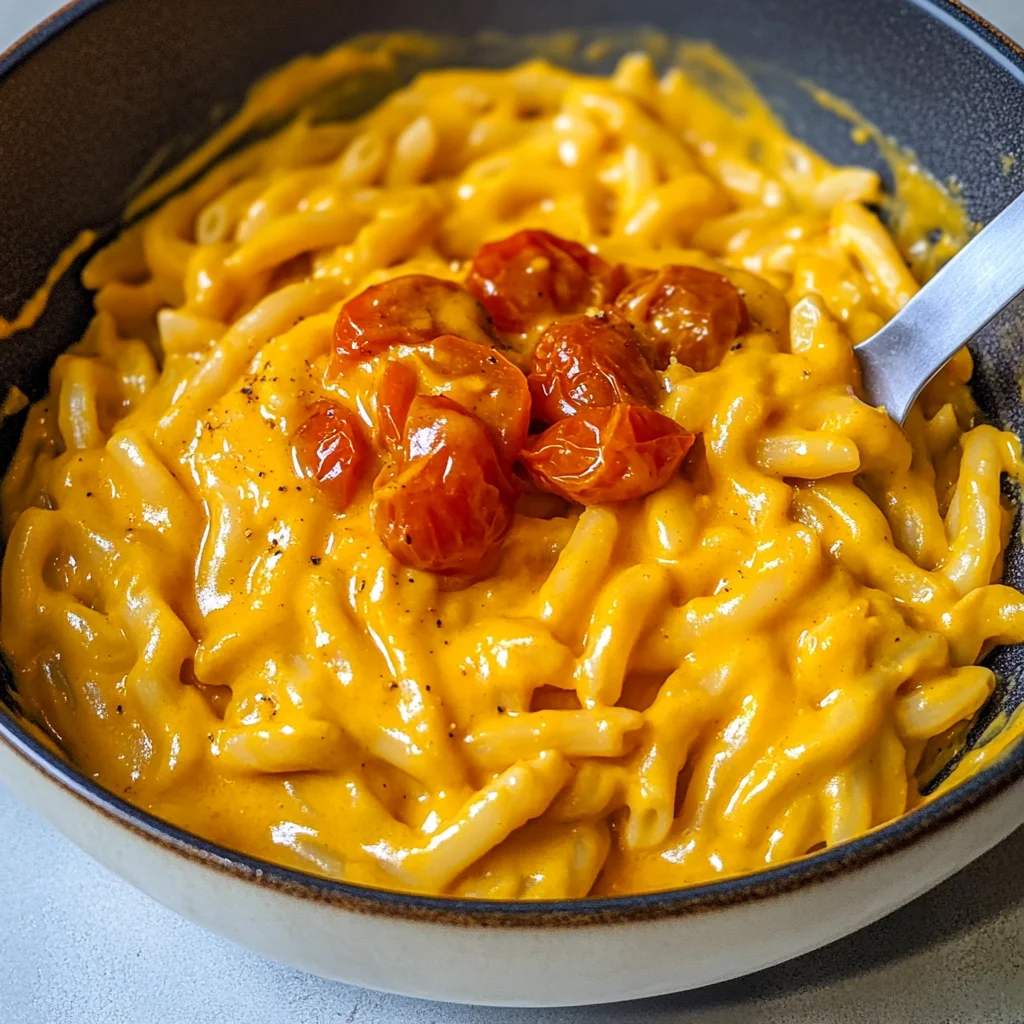
Storage & Reheating Instructions
Refrigerator Storage
- Store in an airtight container.
- The sauce will last for about 3-5 days in the refrigerator.
Freezing Butternut Squash Pasta Sauce
- Pour into freezer-safe containers or bags.
- It can be frozen for up to 3 months.
Reheating Butternut Squash Pasta Sauce
- Oven: Preheat to 350°F, transfer the sauce to an oven-safe dish, and heat for about 20 minutes.
- Microwave: Place in a microwave-safe bowl, cover loosely, and heat in short intervals until warm.
- Stovetop: Heat over medium-low heat while stirring frequently until warmed through.
Frequently Asked Questions
Here are some common questions about Butternut Squash Pasta Sauce that may help you while preparing this recipe.
What is Butternut Squash Pasta Sauce?
Butternut Squash Pasta Sauce is a creamy vegan sauce made from roasted butternut squash, fresh tomatoes, and aromatic herbs, perfect for tossing with your favorite pasta.
Can I use fresh butternut squash instead of frozen?
Yes, you can! Just peel and dice fresh butternut squash into similar-sized pieces as the frozen variety before roasting.
How can I customize my Butternut Squash Pasta Sauce?
Feel free to add other vegetables like spinach or kale for extra nutrition or spice it up with red pepper flakes for heat.
Is this recipe gluten-free?
You can easily make it gluten-free by using gluten-free pasta. The sauce itself is naturally gluten-free!
Final Thoughts
This Butternut Squash Pasta Sauce is not only creamy and delicious but also versatile. You can customize it by adding different vegetables or spices according to your taste. Whether you’re serving it for dinner or meal prepping for the week, this recipe is sure to impress. Give it a try today!
Butternut Squash Pasta Sauce
Indulge in the creamy goodness of Butternut Squash Pasta Sauce, perfect for elevating your weeknight meals or impressing guests at special gatherings. This delightful vegan sauce combines roasted butternut squash and fresh tomatoes to create a velvety texture that’s both nutritious and satisfying. With just a handful of wholesome ingredients, you can whip up this dish in under an hour, making it an excellent choice for busy evenings. Whether served over your favorite pasta or used as a base for vegetable dishes, this sauce is versatile and can cater to various dietary preferences without compromising on flavor.
- Prep Time: 15 minutes
- Cook Time: 30 minutes
- Total Time: 45 minutes
- Yield: Serves approximately four people 1x
- Category: Main
- Method: Baking
- Cuisine: Vegan
Ingredients
- 16 oz frozen diced butternut squash
- 1.5 cups fresh chopped tomatoes
- 1/2 yellow onion
- 2 tbsp olive oil
- Salt and black pepper to taste
- 1/2 tsp dried thyme
- 1 lb pasta (your choice)
Instructions
- Preheat oven to 450°F (232°C) and line a baking sheet with parchment paper.
- Spread frozen butternut squash, chopped tomatoes, and sliced onion on the baking sheet. Drizzle with olive oil, seasoning with salt, pepper, and thyme.
- Mix well and roast for about 20 minutes until tender.
- Meanwhile, cook pasta according to package instructions until al dente; reserve 1/3 cup of pasta water before draining.
- Blend roasted vegetables with reserved pasta water until smooth.
- Toss the blended sauce with drained pasta in a large bowl until evenly coated.
- Serve immediately, adding optional toppings like plant-based parmesan or toasted nuts if desired.
Nutrition
- Serving Size: 1 cup cooked pasta with sauce (about 250g)
- Calories: 320
- Sugar: 5g
- Sodium: 350mg
- Fat: 10g
- Saturated Fat: 1g
- Unsaturated Fat: 9g
- Trans Fat: 0g
- Carbohydrates: 50g
- Fiber: 8g
- Protein: 8g
- Cholesterol: 0mg


